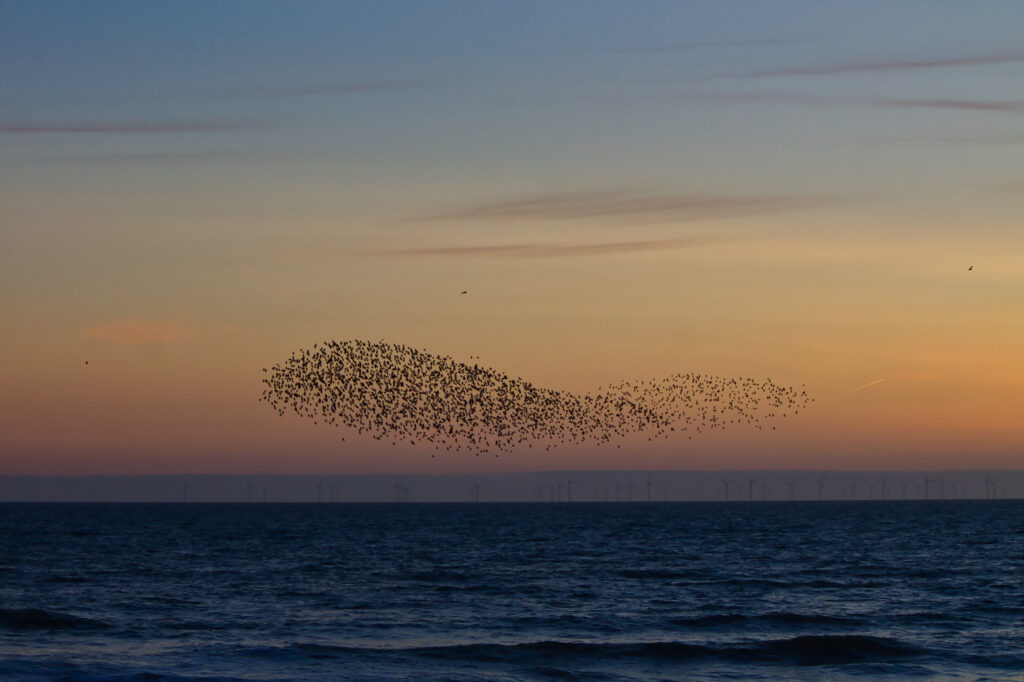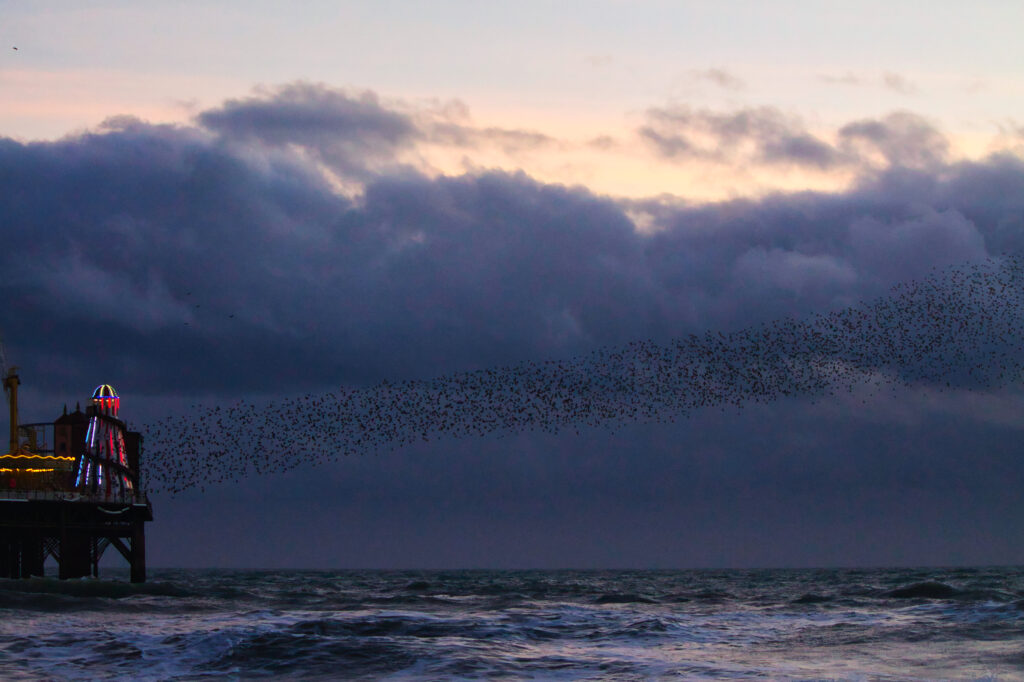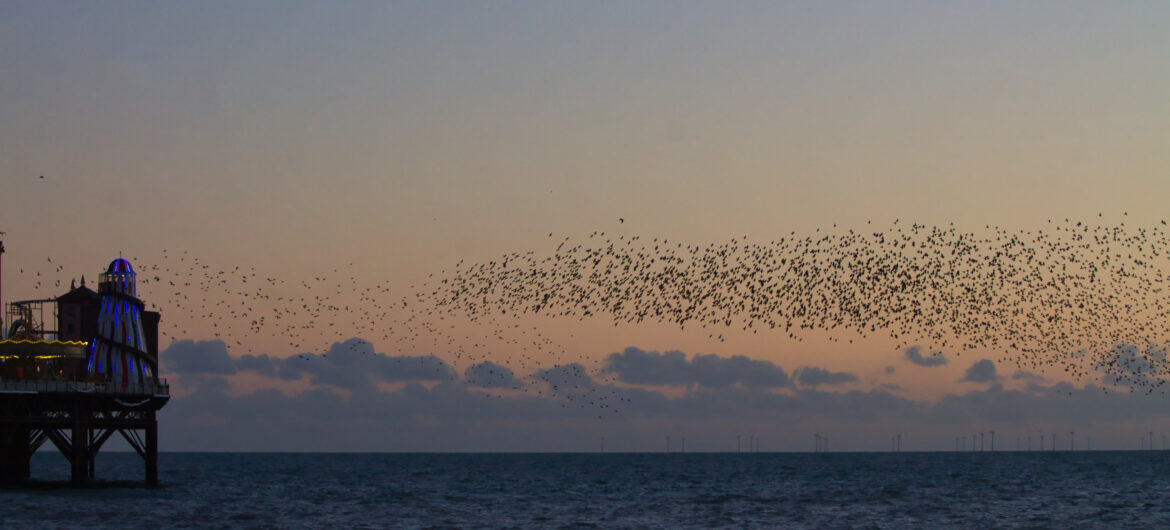Rob Barrie, Science & Technology Editor, discusses the ‘why’ and ‘how’ of Brighton’s most famous natural phenomenon
Between November and March every year, one of nature’s most beautiful spectacles occurs after dusk each day, without fail. During the winter months, flocks of starlings flee from across Europe to escape harsh seasonal conditions. Brighton is a favourite destination for many of these migrating birds and upon arriving, they join the permanent British starling residents. This can create groups as large as 40,000 and this is reflected in the sheer density of murmurations. I often find myself on Brighton beach during these months with my camera – though, in truth, still photographs cannot capture this dynamic display in all its beauty. And, more often that not, I am so captivated by it that I usually stand in pure admiration as I wonder how such aerial poetry comes about.
In truth, scientists do not know all the reasons why starlings put on this magnificent display before settling down for the night. They are, however, at least confident on two purposes. First, it is thought the murmurations, which obtained its name from the sounds of the wings as the starlings change direction, functionally serves to deter predators, such as falcons, from attacking. ‘Safety in numbers’ is a defence tactic utilised by many species. The second purpose originates from the sociality of starlings. During the day, starlings feed across the Sussex countryside, and upon returning to roost on the Brighton coast, the murmuration acts as a perfect vehicle in which to exchange important information – such as successful or unsuccessful food routes. This communication of ‘foraging information’ is seen in other species of the animal kingdom, too. Honeybees, upon returning to the hive, conduct the famous ‘waggle dance’ which describes the direction and distance of a food source.

A murmuration itself is an example of swarm behaviour. The wonderful pulsatile waves one sees on Brighton beach is an emergent behaviour resulting from careful coordination between thousands of individual birds. The question of how starlings self-organise to orchestrate a display of perfectly aligned flight paths is one that has brought the fields of biology and mathematics together. Swarming behaviour can, at its core, be described by three properties: separation, alignment and cohesion. A swarm needs to avoid crowding but also stay in close proximity, whilst also simultaneously flying in aligned trajectories.

It was only until recently that scientific studies could accurately record bird flocking. Before, only simple computer model simulations were run. Whilst the three parameters listed above could be altered to produce a spectrum of flocking models, understanding was limited due to the inability to accurately obtain data fom flocking in the real-world. New insight came after a 2008 study, led by Michele Ballerini at the Centre for Statistical Mechanics and Complexity in Rome, which recorded three-dimensional data from real-life murmurations. The results from the study, after cross-examination with previous models, suggest that starlings only pay attention to the nearest six birds. Therefore, starlings do not constantly process information from the entire flock. One can think of the flock being divided into many sub-units that each have overlapping members. Aligning multiple sub-unit flights is easier than aligning an entire flock of thousands of birds. In this manner, murmurations occur through topological geometry as opposed to metric geometry; i.e., starlings do not pay attention to other starlings within a set radius but instead pay attention to the closest starlings at any given time. This underlying principle explains why a murmuration can elongate, stretch and bend without loss of integrity. Furthermore, this also has the added advantage of being versatile to flock number. If a starling only has to match its closest six neighbours, then, theoretically, the upper-limit of murmuration size is infinite.
Despite the public interest that surrounds large-scale murmurations, starling numbers in Britain are falling at an alarming rate. The population is estimated to have decreased by around 80% percent – human activity, unsurprisingly, is to blame. If we are to continue to observe in awe and wonder at this seasonal phenomenon, we must actively campaign to aid starling population recovery. Most importantly though, we must do this for the starling themselves. As described in this article, large murmurations are a key behaviour for the survival and continuation of this beautiful species.
Images credit: Rob Barrie





